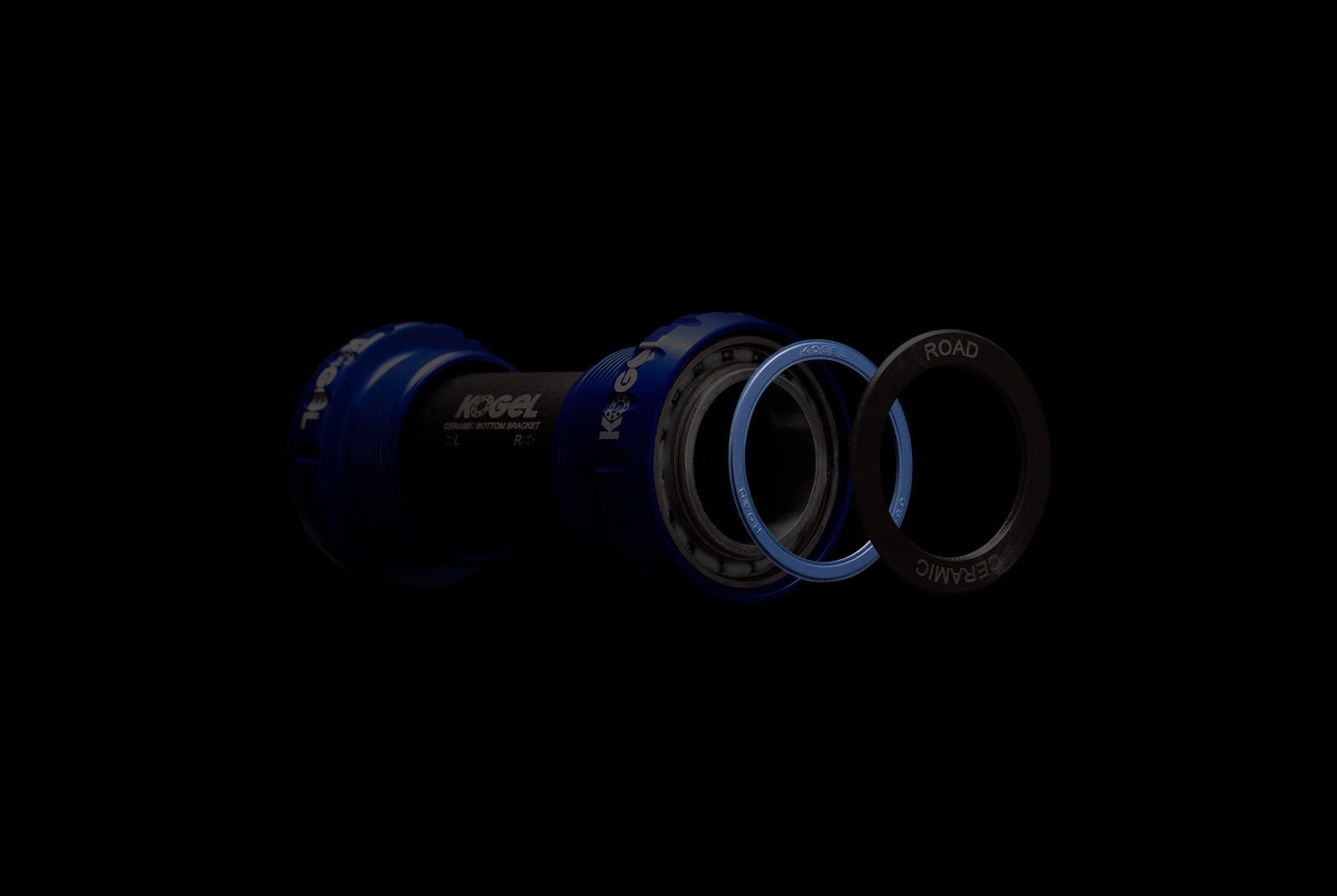Why do I have to choose?
Kogel Bearings was founded on the belief that we could make a better bearing, specifically for bicycle applications.
Part of that was based on reducing friction, but an equal amount was focused on longevity in all riding environments.
It became obvious that one bearing could not do both, hence the introduction of road seals for lowest friction and cross seals for best protection.
Since day one our road and off-road bearings are only different in the seals and amount of grease they contain.
Bearing Seal Construction
Bearing seals for bicycles are typically made of a metal ring, covered in rubber. They grab a firm hold on the outer race, creating rubber-on-metal friction.
The inner race usually has a groove in which the seal runs across the metal. This is where the friction vs protection is decided.
Blue Road seals for lowest friction
Our blue road seals are built to brush the inner race. Imagine the seal touching the metal rings, but only just.
Any shorter and the bearing would be fully open to the elements. No pressure means no friction, but also minimal protection.

In the case of Kogel Bearings, this setup will stop the occasional water running across the seals, but it does not offer protection for a multi hour mud fest or the power washing that usually follows said mud party.
Green Cross seals for best protection
Cross seals are designed to be full contact, double lip seals. This means the seal running in the inner race groove is shaped like a W (the underscore representing the inner race).

The center part of the “W” fills itself with grease and the seal firmly presses onto the metal race. (unlike the underscore example, which leaves a gap between the seal and inner ring).
This build-up of pressure leads to slightly increased friction but adds a ton of protection from the elements.
Use the seal types to suit your environment
With these two seal types, we created an opportunity to get creative and match your riding conditions. Our bearings switch from road to cross and vice versa by simply changing the seals during service.
Riders can run cross seals for winter training in wet conditions, then change to road seals in late spring to be super fast in the better conditions of summer.
We have seen riders use road seals on the inner side on their hubs and cross seals for better protection on all visible surfaces.
The seals on the inside of a hub (facing the center) typically do not get contaminated. The outer seals (facing towards the fork dropouts) do all the heavy lifting.
This setup could build an optimal balance between low friction and sufficient protection.

